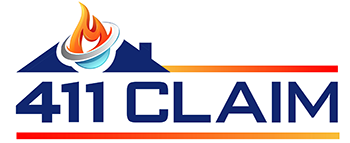
Contents
Did you know that nearly 50% of homes experience some form of fire damage during their lifetime? When faced with a fire restoration situation, understanding the three key steps for effective fire restoration can make all the difference. By accurately evaluating the damage, thoroughly cleaning, and conducting a final inspection, you can guarantee a safe and complete recovery. But what specific actions should you take to navigate this complex process? Let’s explore each step in detail.
Key Takeaways
- Conduct a thorough damage assessment to identify all visible and hidden issues, documenting findings for insurance and contractors.
- Remove debris and clean affected surfaces using specialized cleaners, ensuring that smoke damage is addressed in all areas.
- Improve air quality with air scrubbers and dehumidifiers, monitoring the environment for lingering odors and ensuring fresh air circulation.
- Perform a final inspection to confirm the safety and restoration quality, checking structural integrity and functionality of smoke detectors.
- Implement prevention strategies, including regular inspections of electrical systems and educating occupants on fire safety practices.
Assessing the Damage
When you face the aftermath of a fire, analyzing the damage is essential to determine the next steps in the restoration process.
Start by conducting a thorough damage evaluation, focusing on both visible and hidden areas. Inspect walls, ceilings, and floors for signs of structural integrity issues—look for cracks, warping, or weakening materials.
Document your findings with photographs and notes, which will be invaluable for insurance claims and contractors.
Pay close attention to electrical systems and plumbing; fire can compromise these critical components, posing safety risks.
Involve professionals when necessary, as their expertise can help guarantee you don’t overlook potential hazards.
Remember, a careful and methodical approach to evaluating damage won’t only guide your restoration efforts but also provide peace of mind during this challenging time.
You’re not alone in this; reaching out for support can help you navigate the difficult journey ahead.
Cleaning and Restoration
As you move forward with cleaning and restoration, it’s crucial to tackle soot and smoke damage promptly to prevent lingering odors and further deterioration.
Begin with debris removal, clearing away burnt materials and any hazardous items that could complicate the restoration process. Use proper protective gear during this stage to guarantee your safety.
Next, focus on cleaning surfaces affected by smoke damage. Employ specialized cleaners and techniques designed for soot removal from walls, ceilings, and furniture.
Don’t overlook hidden areas, as smoke can settle in places you mightn’t initially consider, prolonging the restoration timeline.
For textiles and carpets, professional cleaning or replacement may be necessary to eliminate odors effectively.
After cleaning, consider using air scrubbers or dehumidifiers to enhance air quality and speed up the drying process.
Each step you take in this meticulous process brings you closer to reclaiming your space and restoring a sense of belonging.
Final Inspection and Prevention
After completing the cleaning and restoration process, conducting a thorough final inspection is essential to confirm your space is safe and free from any lingering issues.
This step not only guarantees the quality of your restoration but also reinforces your commitment to safety measures.
As you perform your final inspection, keep a detailed final checklist handy, verifying:
- The integrity of structural elements, confirming they’re free of damage
- Proper ventilation, eliminating any lingering smoke odors
- Functionality of smoke detectors, confirming they operate effectively
- Cleanliness of surfaces, verifying removal of all soot and debris
Review
In fire restoration, taking it step by step guarantees you don’t overlook any essential details. By thoroughly evaluating the damage, cleaning up effectively, and conducting a final inspection, you’ll pave the way for a safe return to your space. Remember, prevention is the name of the game; that way, you can avoid future pitfalls. So, roll up your sleeves and tackle each phase with care—your safety and peace of mind depend on it.
Recent Posts
Pricing Insights for Damage Restoration Services
When unexpected events disrupt your life, steering through the costs of damage restoration can feel
Budgeting for Blaze Cleanup: A Trusty Guide
Budgeting for blaze cleanup is like steering through a maze—complex and overwhelming but attainable with
Top Storm Damage Repair Techniques for Homeowners
When storms release their fury, the aftermath of storm damage can feel overwhelming, much like
